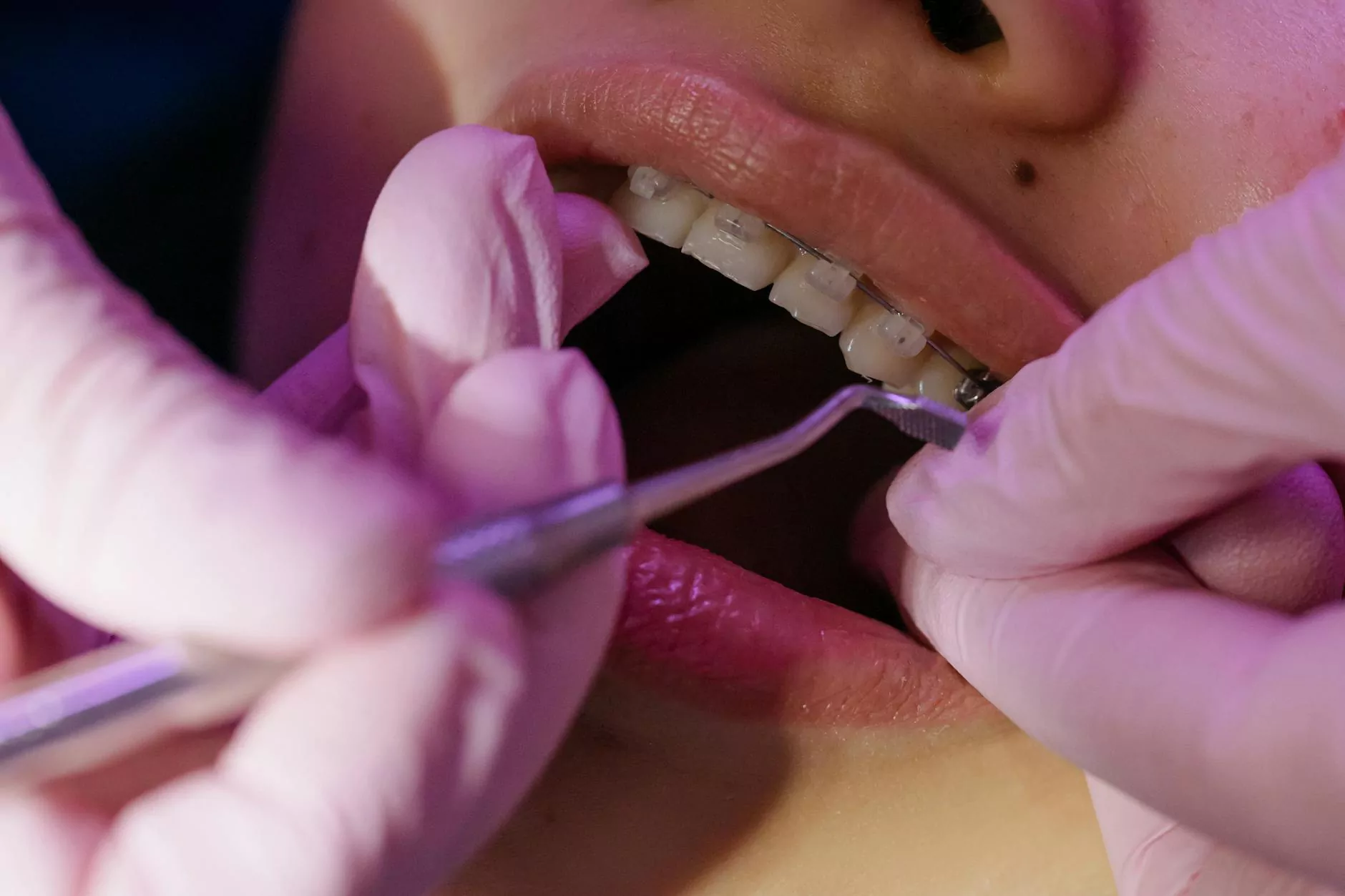Discover the Power of Dental Inlays: A Modern Approach to Restorative Dentistry

In the realm of restorative dentistry, advancements have revolutionized the way dental professionals repair and enhance natural teeth. Among these breakthroughs, dental inlays have emerged as a highly effective and aesthetically pleasing solution. As a product of innovative dental technology, dental inlays offer a durable, conservative, and natural-looking alternative to traditional fillings and crowns, especially for repairing decayed or damaged teeth that require more than a simple filling but less than a crown.
What Are Dental Inlays? An Overview of this Advanced Restorative Solution
Dental inlays are custom-made restorations designed to fit precisely within the cusps of a damaged tooth. Unlike standard amalgam or composite fillings, which are directly applied into a prepared cavity, dental inlays are fabricated outside the mouth—typically in a dental laboratory—and bonded securely into the prepared cavity. This meticulous process ensures a high level of accuracy, strength, and preservation of the healthy tooth structure.
These restorations are particularly suitable for teeth with moderate decay, small fractures, or previous large fillings that need restoration. They are mainly made from high-quality materials such as porcelain, composite resin, or gold, each offering unique benefits tailored to patient preferences and clinical indications.
The Significance of Dental Inlays in Modern Dentistry
In the context of contemporary dental practices, dental inlays are gaining popularity due to their numerous advantages over traditional restoration options. They represent the pinnacle of minimally invasive dentistry, which aims to preserve as much of the natural tooth as possible while providing durable and aesthetically pleasing results.
Here’s what makes dental inlays the preferred choice for many dental professionals and patients:
- Enhanced durability compared to composite fillings, especially when made from porcelain or gold.
- Superior aesthetics due to the natural tooth-like appearance of porcelain and composite materials.
- Conservation of healthy tooth tissue because only the decayed or damaged portion needs to be removed for restoration.
- Better fit and function owing to precise laboratory fabrication and advanced bonding techniques.
- Longevity with proper care, often lasting 10-15 years or more, outperforming traditional restorations.
Step-by-Step Process of Getting Dental Inlays at Kensington Dental Studio
Understanding the process involved in obtaining dental inlays can reassure patients and help them make informed decisions about their oral health. At Kensington Dental Studio, our expert dental hygienists and restorative specialists follow meticulous protocols to ensure optimal outcomes:
1. Initial Examination and Diagnostics
The journey begins with a comprehensive examination of the affected tooth, including X-rays to assess the extent of decay, cracks, or previous restorations. This thorough assessment determines whether dental inlays are suitable.
2. Tooth Preparation
Once the decision is made, our dentist gently administers local anesthesia and prepares the tooth by removing decayed tissue or existing restorations. The preparation creates a precise cavity shape for the inlay to fit seamlessly.
3. Impressions and Material Selection
Next, detailed impressions of the prepared tooth are taken using state-of-the-art digital or conventional impression techniques. These impressions are sent to a trusted dental laboratory where the custom dental inlay is fabricated. During this phase, patients choose the material—porcelain for aesthetics, gold for durability, or composite resin for cost-effectiveness.
4. Fabrication of the Inlay
The dental laboratory meticulously crafts the inlay based on the impressions and material specifications. This process can take a few days, during which a temporary filling protects the prepared tooth.
5. Fitting and Bonding the Inlay
Once the custom inlay is ready, patients return for the fitting appointment. The dentist checks the fit, occlusion (bite), and appearance, making minor adjustments if necessary. The inlay is then bonded securely with dental adhesive, ensuring a strong and lasting restoration.
The Materials Used for Dental Inlays: Choosing the Best Option
The success of dental inlays heavily depends on the materials used. Modern restorations offer a variety of choices, each with distinct features:
- Porcelain: Highly aesthetic, mimics natural enamel, resistant to staining, ideal for visible teeth.
- Gold: Exceptionally durable, long-lasting, with a proven track record of performance, though less aesthetic.
- Composite Resin: Cost-effective, good aesthetics, but may wear faster than porcelain or gold.
Our dental team at Kensington Dental Studio will help you select the material that best suits your needs, preferences, and budget, ensuring optimal functional and aesthetic results.
Benefits of Choosing Dental Inlays Over Traditional Restorations
Opting for dental inlays offers several distinct advantages that make them a superior choice for suitable cases:
- Preservation of Natural Tooth Structure: By only removing decayed tissue, inlays conserve healthy enamel and dentin.
- Enhanced Strength and Support: The precise fit distributes biting forces evenly, reducing the risk of fractures.
- Improved Aesthetics: Particularly with porcelain inlays, results are indistinguishable from natural teeth.
- Biocompatibility: Materials like porcelain and gold are hypoallergenic and well tolerated by most patients.
- Minimal Sensitivity: Properly bonded inlays reduce tooth sensitivity compared to amalgam fillings.
Long-Term Care and Maintenance of Dental Inlays
To maximize the lifespan of your dental inlays, routine dental care and preventive practices are essential:
- Maintain excellent oral hygiene by brushing twice daily and flossing regularly.
- Attend regular dental check-ups to monitor the condition of your restorations.
- Avoid biting hard objects like ice or hard candies to prevent chipping or fracturing.
- Address minor issues promptly to prevent further decay or damage.
- Use of mouthguards during sports or nighttime if you have bruxism (teeth grinding).
With proper care, dental inlays can serve effectively for over a decade, ensuring your restored teeth stay healthy and functional.
The Future of Restorative Dentistry and Dental Inlays
As technology continues to evolve, the role of dental inlays in restorative dentistry is expected to expand. Innovations like CAD/CAM digital design and high-strength ceramics enable even more precise and durable restorations, reducing turnaround times and improving patient outcomes. Additionally, ongoing research into bioactive and stronger composite materials promises to enhance the longevity and functionality of future dental inlays.
At Kensington Dental Studio, our commitment to integrating cutting-edge dental technology ensures our patients receive the most advanced and effective restorative options available.
Conclusion: Why Kensington Dental Studio’s Expertise in Dental Inlays Matters
When it comes to dental inlays, choosing a knowledgeable, experienced dental team makes all the difference. Our experienced dental hygienists and restorative specialists are dedicated to providing personalized, minimally invasive solutions that restore your natural smile with precision and care.
Whether you require a repair due to decay or fracture, or you seek an aesthetically superior restoration, Kensington Dental Studio offers the finest quality dental inlays that blend seamlessly with your natural teeth, ensuring long-lasting results and optimal oral health.
Schedule a consultation today and discover how dental inlays can transform your dental experience, restoring confidence, function, and aesthetics—all backed by our unwavering commitment to excellence.





